A barn isn't rebuilt in a day
- Peter Barron

- Jan 6, 2021
- 5 min read
Updated: Apr 12, 2022

We'll always remember the first time we set foot inside the barn. The whitewashed stone structure, maybe 150 years old, was housing piglets. Swallows' nests clung to the door frames. It was a junkyard of agricultural implements: scythes and rakes, boxy Spanish stirrups, rope for curing hams.
Ducking into a windowless room, we realised that within living memory this had also been someone's home. There were framed pictures on the walls and a decaying embroidery sampler, dated 1867.

Julia and I had just bought the place lock, stock and barrel alongside an already renovated farmhouse. Soon we were sifting through abandoned possessions and cleaning them up: an antique coffee grinder and cups made from tin cans, a cheap but beautiful Arab lantern in coloured glass we use for mosquito candles in summer, a pottery bust of what looked like a 1920s starlet, with a broken nose. She graces the kitchen window sill.
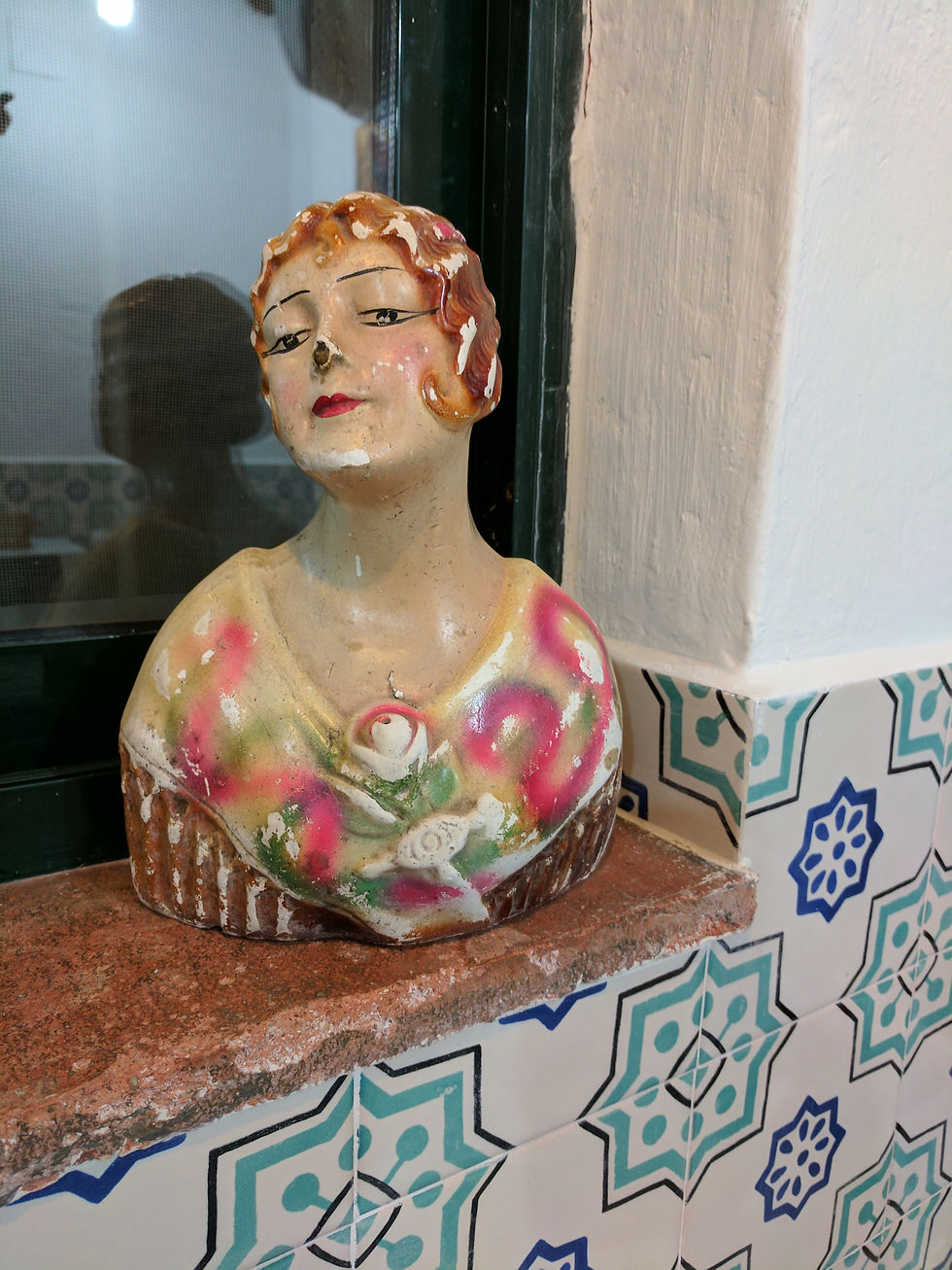
The barn was in a very bad state, but it was thick-walled and almost as big as the farmhouse. We resolved that one day we would restore it. The alternative was to let it crumble to the ground like lots of others across the region.
At that point, we had no idea how to go about renovating it, or even what we wanted to use it for. Did we want a faithfully restored rustic barn with low ceilings, tiny windows and an entrance for chickens of the kind you might see in a folk museum, or a minimalist white box like those in style magazines?

There's a saying we often heard when we first started to look for a house in Spain: las cosas de palacio van despacio. Literally, "palace matters move slowly"; metaphorically,"good things come to those who wait". We would have plenty of time to think about it.
The architect and builder who had renovated the farmhouse back in 2003 were still a team, and up for the challenge. Manolo, our twinkle eyed builder, had been married here and still had an obvious affection for the venue.

He examined the walls. The sensible thing to do, he said, would be to knock the whole thing down and start again. Our architect Jesús shook his head. The local building regulations allowed only for restoration and repair.
Between them, they spoke barely a word of English, and our Spanish was still basic. We had long, open-air meetings with Jesús -"do you want to keep that wall, and what do you think of these door handles?" - after which we would have to go and have a lie down.
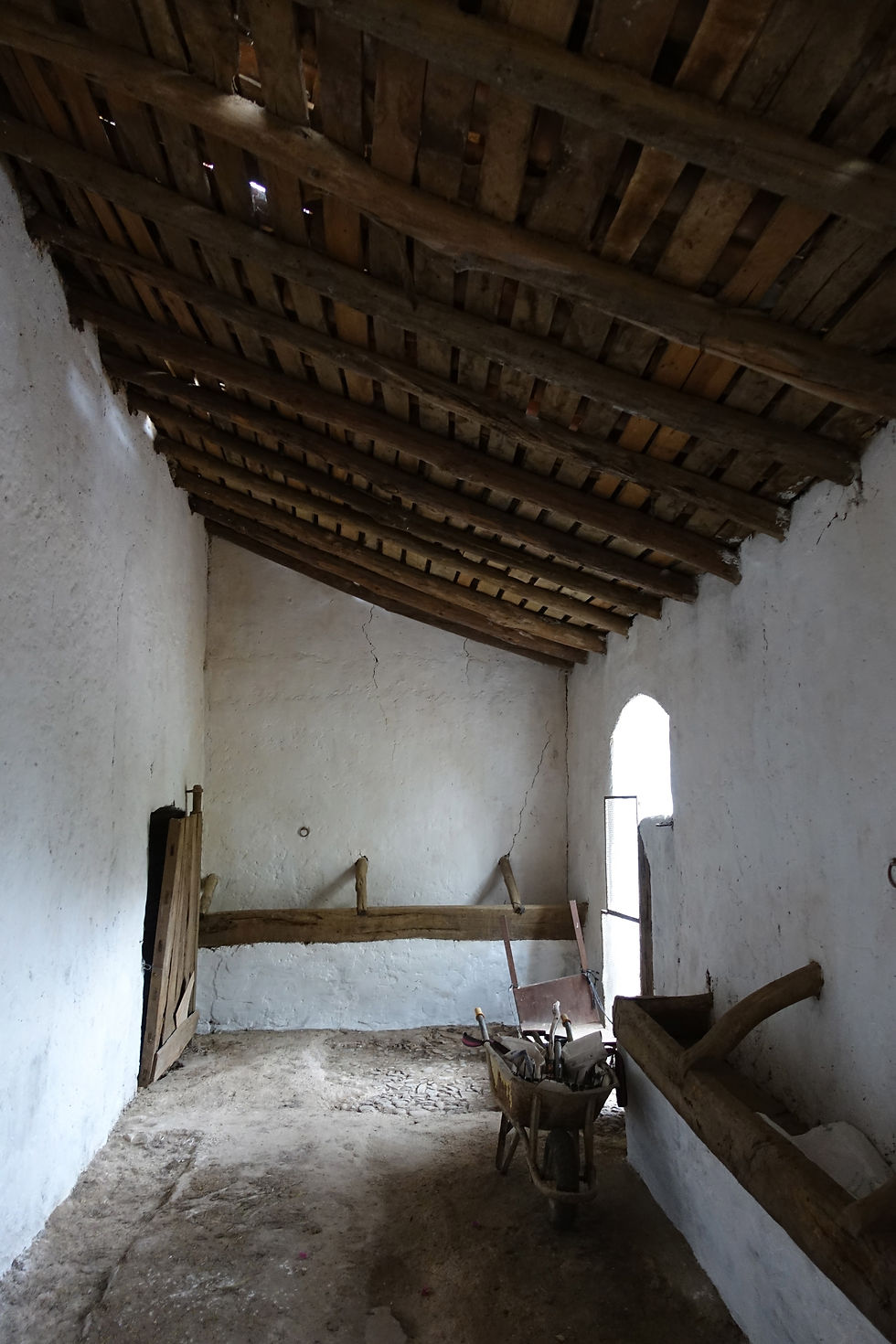
We wanted to stick as far as possible to the original layout of the building. Tal cual - as it is. It had a cobbled porch running the length of the barn with mangers and rings for tethering animals. It had a rickety hayloft we could convert into an upstairs bedroom, and heavy rustic doors with medieval locks. And although the barn looked small and squat from the front, it had a large interior space. We decided to make that double height and use it as a - well, what? Band room? Games room? Banqueting room? Too early to say, but we did start calling it Wolf Hall.
When we next returned to Spain work was underway. It was a shock. The old tiled roof had gone and sections of unsound wall had been demolished. Muddy rivers of rain ran between the stones, threatening to wash the whole structure away. It looked like Stalingrad in 1942.

We needed to get the roof back on, pronto. The original roof tiles were in the traditional style imported to Spain by the Moors - simple, curved terracotta once shaped on the thighs of artisans. We should go for those, right? Not according to Manolo.
The problem with traditional roof tiles, he said, is that small birds nest in the gaps at the edges. Then eagles divebomb, winkle out their prey and smash the tiles. He showed us exactly that problem on our front porch. He recommended tejas mixtas, which lock together with no gaps. Less traditional, but far more effective against eagles.
Slowly, the renovation was taking shape. When we were in Spain we would hear the team of builders - everyone called them los muchachos - arrive at sunrise each day and would take them coffee and tostada for breakfast. Sometimes they would bring us a home-made sausage or a jar of honey. Fran, Valiente and Vicente were experts at building in stone and brick. They seemed cheerfully able to pick up anything, no matter how heavy. They were also handy at knocking things down.
Once we asked if a window at the top of the stairs might be a good idea. A minute later Fran emerged with a sledgehammer and a grin. We had a window. Another time we arrived to find a large arched window had been opened up in a patio wall. We weren't sure, then saw that it perfectly framed a cypress tree planted years earlier. We kept it, and nicknamed the barn Los Arcos.
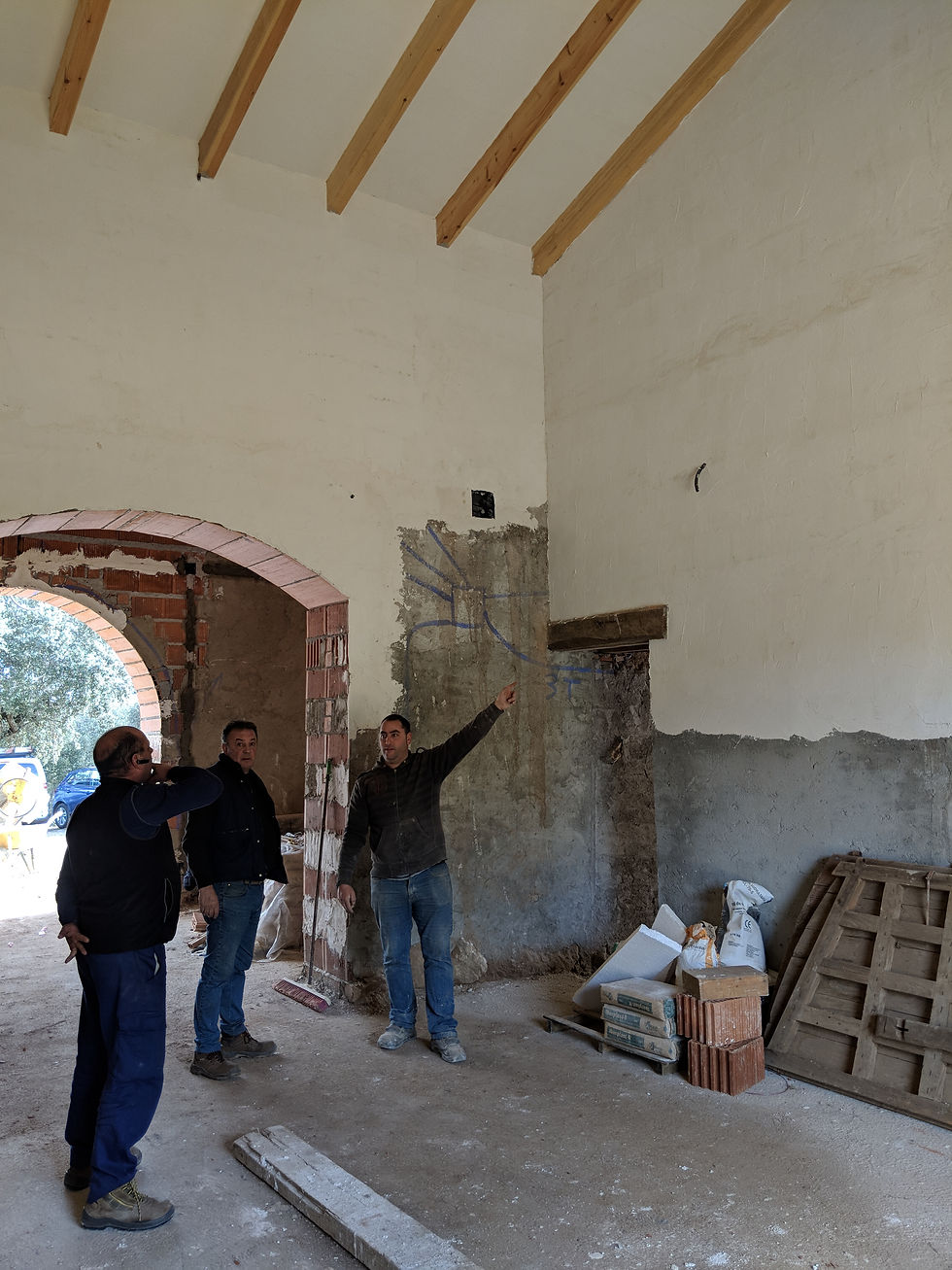
Gradually it dawned on us what we should use it for. How often do you get the chance to build a house to your own, or mostly your own, specification? The answer was obvious: we should live in it.
Then coronavirus struck, and Spain's tight restrictions meant los muchachos were forced to stay at home. But Manolo could continue to work with someone from his bubble, so his brother Ramón joined the project.
We spent most of lockdown in London, but this remote-controlled, bi-lingual process has run far more smoothly than most of the building work we've ever had done in Britain. Every couple of weeks, Jesús sends Whatsapp messages with photos of progress - on beams, doors, windows, tiles, plaster, paint - and always more questions. We have only asked them to redo something once, when they filled in a hole in a wall that we thought looked better the way it was - tal cual.
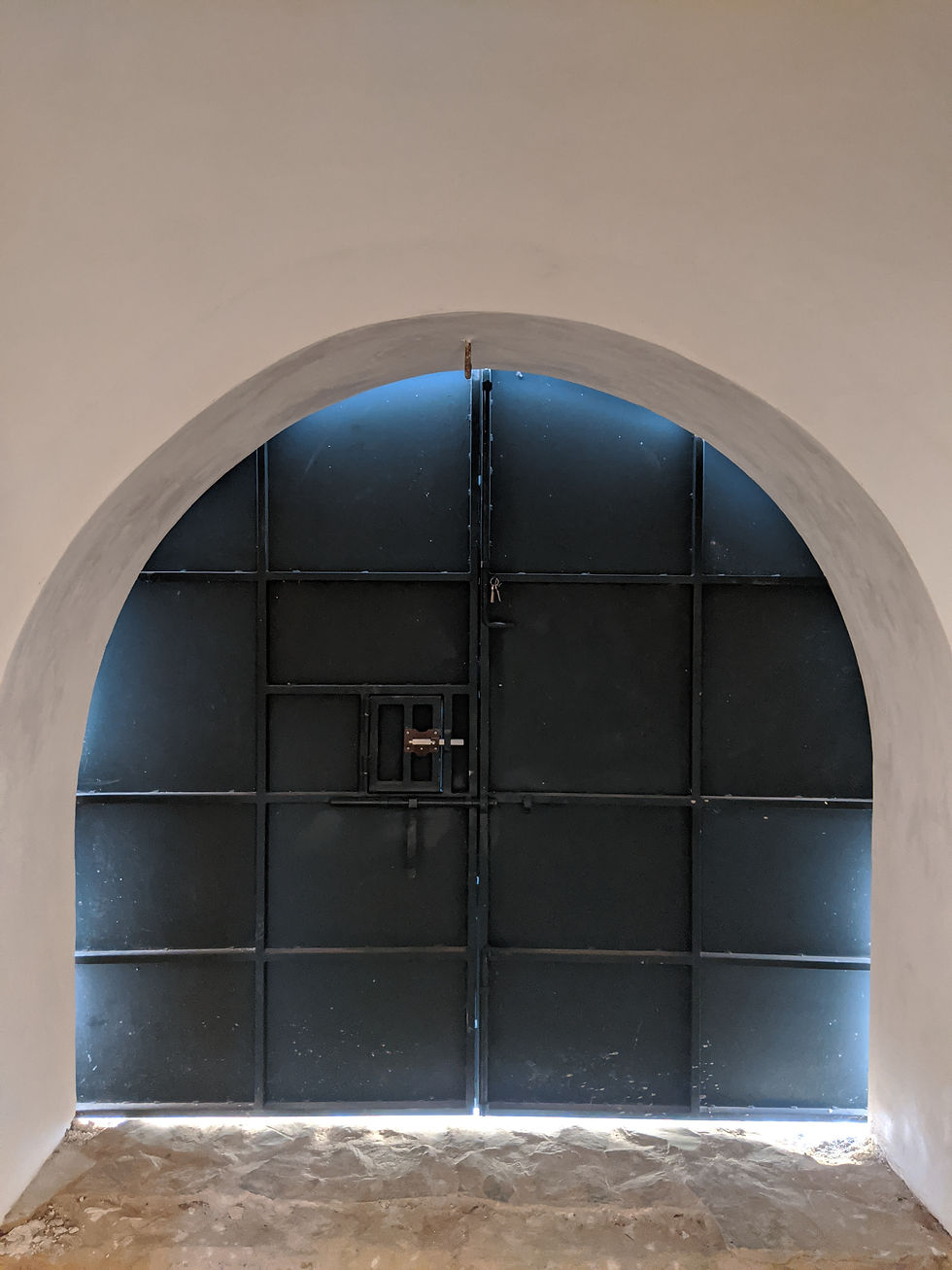
Last summer, when the coronavirus restrictions were briefly lifted, we went to Spain to choose tiles. We'd seen plenty of Spanish kitchens with patterned cement tiles, azulejos hidráulicos, and assumed that was the way to go. Jesús and Manolo thought differently.
Cement tiles are all the rage in Islington, but there is little love for them in Extremadura. They remind people of tougher times in the past, said Jesús, when floors needed to be scrubbed on hands and knees. And if you spill olive oil on them, they're stained forever.
We weren't convinced, so one scorching day Jesús took us on a tour of the region's tile outlets. The first two simply no longer stocked encaustic tiles - no demand. At the third, the proprietor went into his backroom and pulled out a selection of traditional cement tiles, then told us he keeps them only to demonstrate to customers why ceramic tiles are superior.
We gave in, and chose three different tiles. Then Jesús surprised us again by ordering one set from each of the three warehouses we had visited. "That way, everyone eats," he said.
In that way, and in so many others, our barn project has been an education. Everything happens for a reason, and practicality trumps tradition. We've learned terms in Spanish we didn't even know in English. A riser on a staircase: la tabica. Reinforced steel mesh: el mallazo. Tiles staggered like brickwork: matajunta.
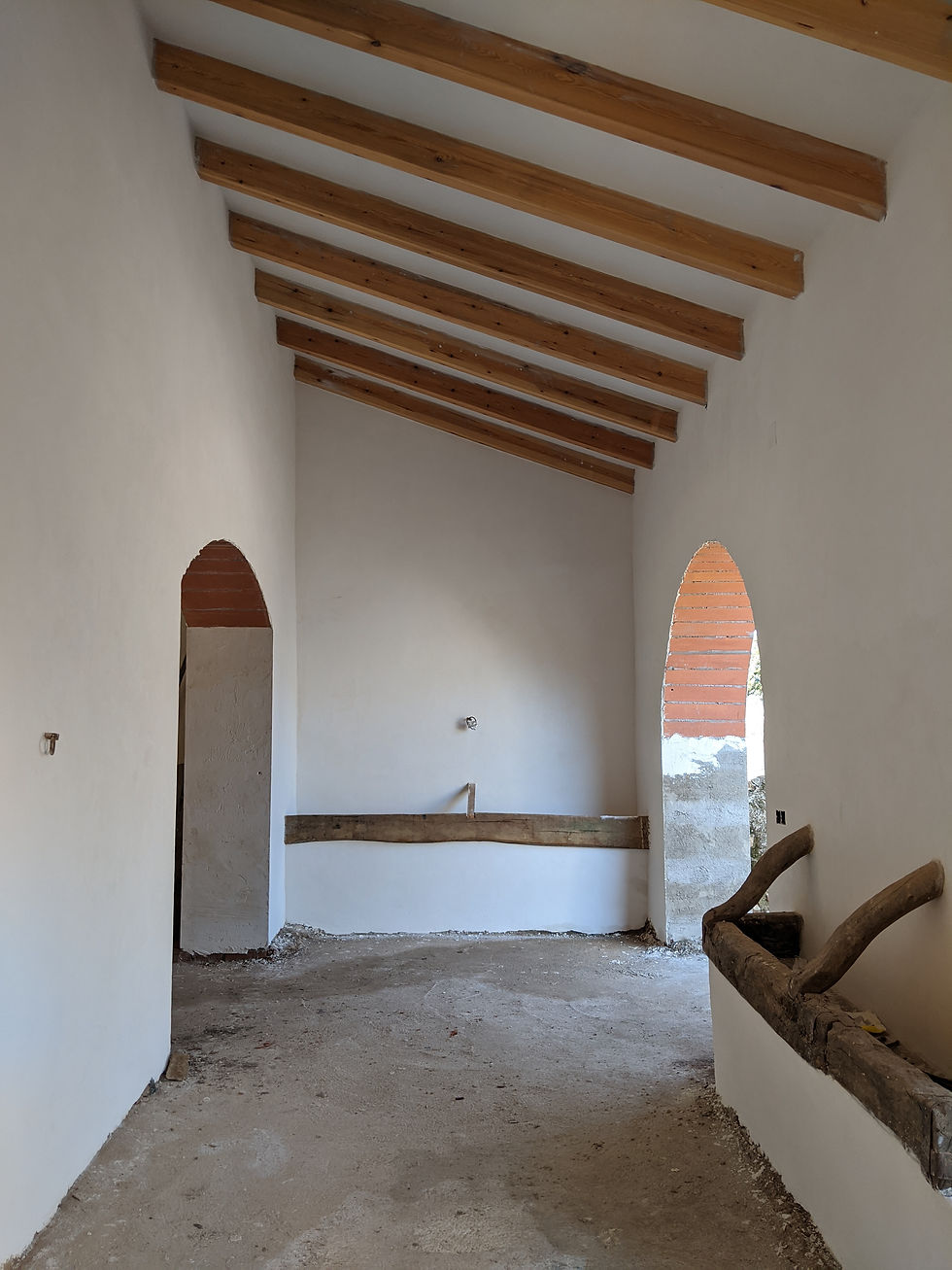
The result is neither a painstakingly authentic restoration nor a designer's white box. It is something in between, a 21st century Spanish barn conversion with a few British touches. Two years on, it's not quite finished. We are still discussing light switches - los interruptores de luz - but by the time we next get back to Spain our palacio should finally have come of age.

Photos by Peter Barron






Wow, what an uplifting story🤗, what amazing history...we were so inspired and encouraged to see this dream transform into reality..